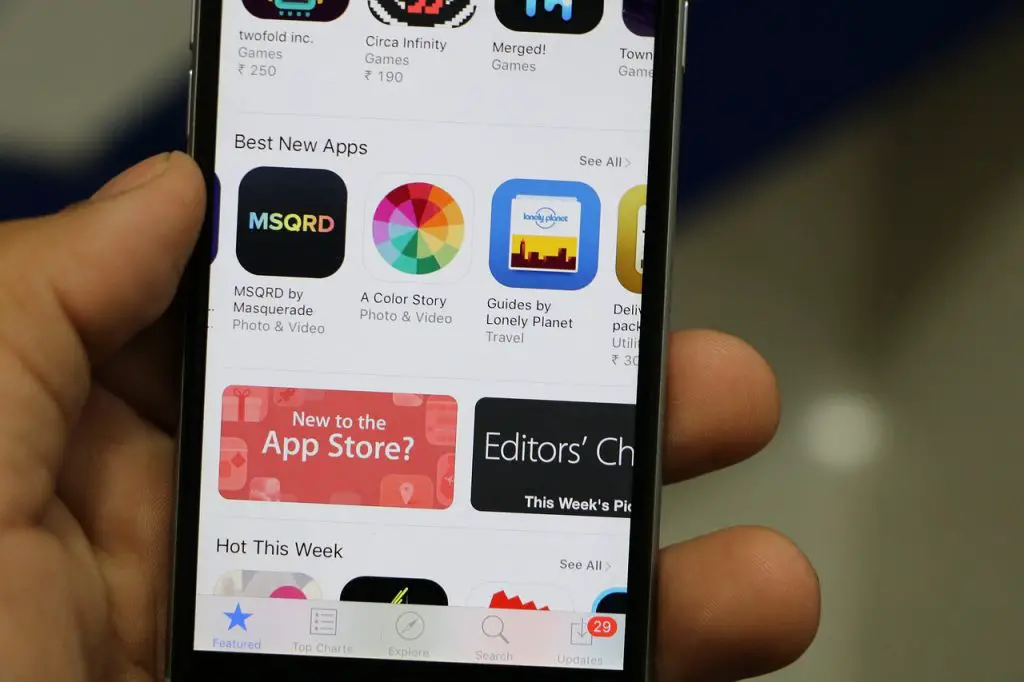This post may contain affiliate links which means I may receive a commission. Learn more on my Privacy Policy page.
How Can I Optimize My App to Improve App Store Rankings?
App Store Optimization (ASO) can be essential in getting your app noticed among millions of other apps on both App Store and Google Play, and vice versa. ASO ensures yours stands out among them all by optimizing it specifically to the App Store/Google Play platform.
ASO involves optimizing your app’s keywords in order to increase its visibility in searches, from titles and descriptions of your app all the way down to metadata tags and images.
Keywords
Billion users download apps daily, creating an opportunity for developers to generate mobile app revenue. In order to take advantage of this market, developers need to optimize their app’s visibility and rank higher in app stores – this process is known as App Store Optimization or ASO, where metadata improvements boost its search rankings and visibility increases in app stores.
One of the key strategies in app store SEO is using keywords that accurately reflect your app’s functionality. Keyword research tools can assist in discovering relevant words and assessing their popularity and competitiveness; or you could conduct focus groups with potential customers to understand which search terms they would use when looking for your app.
Your first priority when adding keywords to your app should be in its title – as this is the primary visibility and ranking factor on both Apple and Google App Stores. Your title should be succinct but descriptive to fit within limited spaces available on both stores.
Screenshots
App store search is the primary means by which users find new apps. Therefore, optimizing your app to get it ranked higher requires changing its title, description, screenshots and ratings/reviews as well as building upon these.
App store screenshots are key as they create the first impression for potential users of your app. Therefore, it is vital that a few well-designed screenshots that highlight its main features appear prominently within these photos with captions including relevant keywords for inclusion within them.
Consciously keep in mind that users want an app that can help solve a specific issue or pain point. If your app store screenshots communicate this effectively, the more likely downloads will occur. Likewise, testing different screenshots, descriptions and keywords to see what produces positive results can help boost both app store rankings and download rates.
Reviews
Millions of apps exist across both Apple’s App Store and Google Play, all competing to attract downloads and users. Achieving success depends heavily on being visible in search results, which is why ASO (app store optimization) should remain an essential focus for mobile developers.
An app’s product page plays an integral part in ASO. Use these elements to describe its functionality, features, benefits and value proposition in order to increase organic search and installs.
Reviews and ratings are another crucial aspect of an app’s ranking, so be sure to get user reviews regularly; more positive and current reviews means higher app rankings! Apple and Google both consider the frequency of app updates as an additional ranking factor, allowing apps to incorporate feedback, user needs and technology improvements as part of their ranking algorithm.
In-app purchases
In-App Purchases provide application owners the chance to monetize their apps directly within their apps, using in-app purchases as an avenue for upselling their Applications directly from within them. From offering users access to premium content or offering the ability to skip levels in your game for a fee to offering digital currencies within games for in-App Purchases can boost engagement and revenue growth for app publishers. When implemented properly and strategically these purchases can help drive up engagement levels as well as drive app sales revenue up.
Keep in mind that in-app purchases are user data, and should be treated accordingly. Don’t overwhelm newcomers with promotions until they demonstrate interest in using your app – instead wait until they begin showing genuine enthusiasm.
Utilizing in-app purchases to enhance the overall user experience and drive downloads can help increase users and app store rankings – the ultimate goal of any app! If your app is exceptional, getting more users will increase its chance of ranking highly in search engines like Google and Apple App Store.




